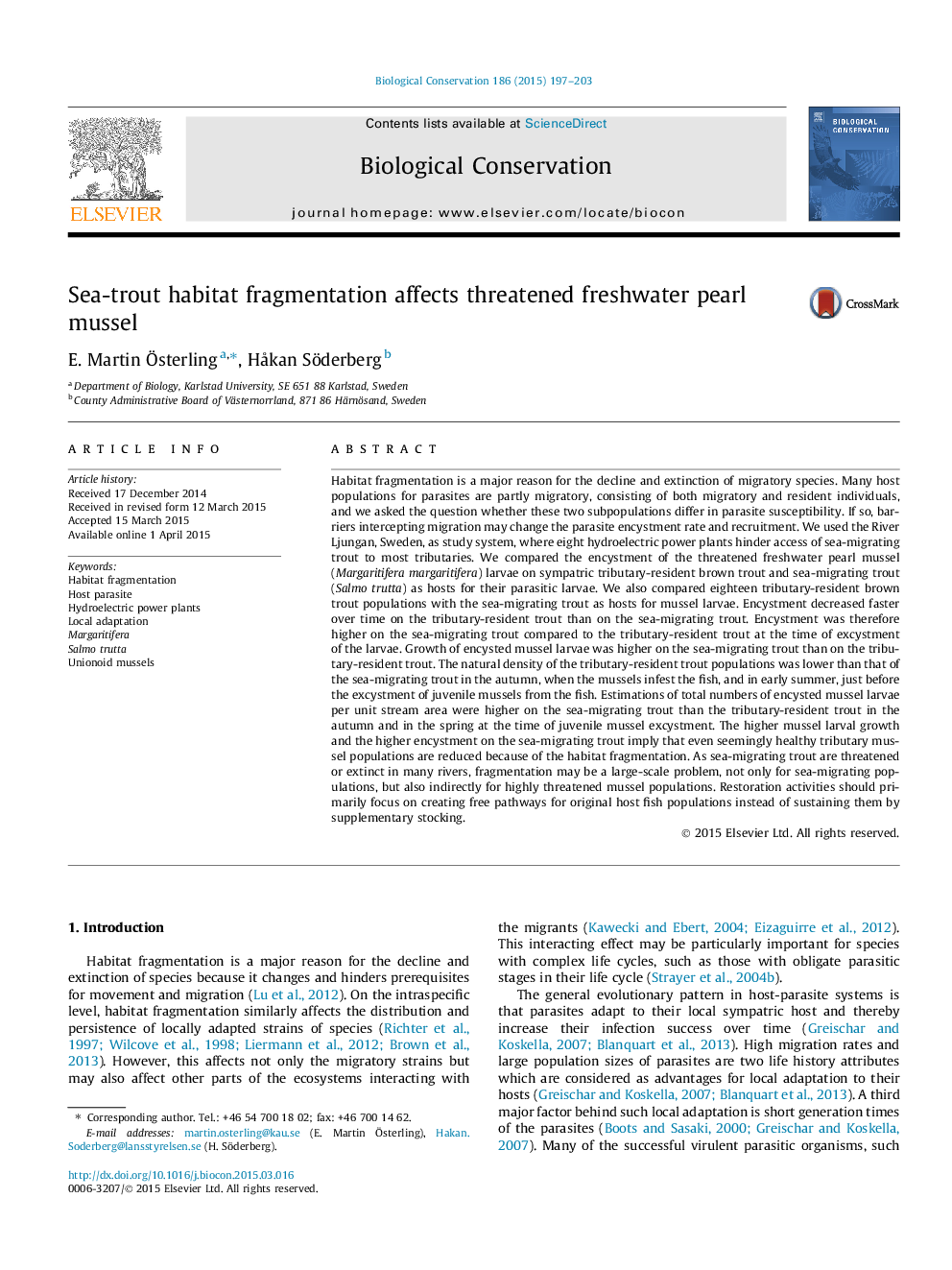| کد مقاله | کد نشریه | سال انتشار | مقاله انگلیسی | نسخه تمام متن |
|---|---|---|---|---|
| 6299704 | 1617915 | 2015 | 7 صفحه PDF | دانلود رایگان |
- Mussel parasite suitability was higher on migratory than on resident host fish.
- Fragmentation hinders original migratory host fish from reaching mussel populations.
- Low mussel encapsulation and growth on resident hosts results in reduced recruitment.
- Seemingly healthy mussel populations are likely reduced because of the fragmentation.
- Restoration should focus on creating free pathways for original migratory host fish.
Habitat fragmentation is a major reason for the decline and extinction of migratory species. Many host populations for parasites are partly migratory, consisting of both migratory and resident individuals, and we asked the question whether these two subpopulations differ in parasite susceptibility. If so, barriers intercepting migration may change the parasite encystment rate and recruitment. We used the River Ljungan, Sweden, as study system, where eight hydroelectric power plants hinder access of sea-migrating trout to most tributaries. We compared the encystment of the threatened freshwater pearl mussel (Margaritifera margaritifera) larvae on sympatric tributary-resident brown trout and sea-migrating trout (Salmo trutta) as hosts for their parasitic larvae. We also compared eighteen tributary-resident brown trout populations with the sea-migrating trout as hosts for mussel larvae. Encystment decreased faster over time on the tributary-resident trout than on the sea-migrating trout. Encystment was therefore higher on the sea-migrating trout compared to the tributary-resident trout at the time of excystment of the larvae. Growth of encysted mussel larvae was higher on the sea-migrating trout than on the tributary-resident trout. The natural density of the tributary-resident trout populations was lower than that of the sea-migrating trout in the autumn, when the mussels infest the fish, and in early summer, just before the excystment of juvenile mussels from the fish. Estimations of total numbers of encysted mussel larvae per unit stream area were higher on the sea-migrating trout than the tributary-resident trout in the autumn and in the spring at the time of juvenile mussel excystment. The higher mussel larval growth and the higher encystment on the sea-migrating trout imply that even seemingly healthy tributary mussel populations are reduced because of the habitat fragmentation. As sea-migrating trout are threatened or extinct in many rivers, fragmentation may be a large-scale problem, not only for sea-migrating populations, but also indirectly for highly threatened mussel populations. Restoration activities should primarily focus on creating free pathways for original host fish populations instead of sustaining them by supplementary stocking.
Journal: Biological Conservation - Volume 186, June 2015, Pages 197-203
